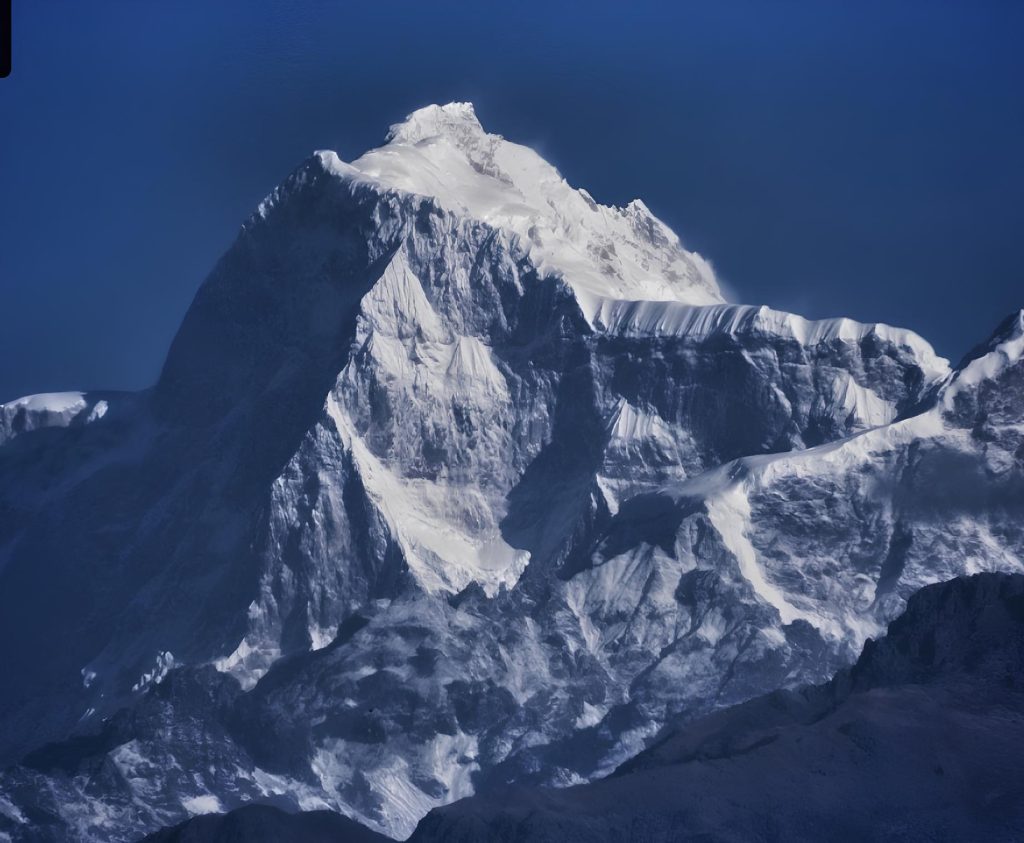Ngadi Chuli: The Enigmatic Peak of the Himalayas
Ngadi Chuli, one of the lesser-known yet captivating peaks of the Himalayas, stands tall and mysterious in the northern part of Nepal. At 7,871 meters, this mountain, also known as “Peak 29,” commands respect and admiration. But it’s not just its height that makes it special—there’s a certain mystique about this peak that draws adventurers and dreamers alike. The mountain, often overlooked by climbers in favor of its more famous neighbors, is like an undiscovered treasure waiting to be explored. Ngadi Chuli: The Enigmatic Peak of the Himalayas
A Sculpture Carved by Nature
Looking at Ngadi Chuli, one might think nature sculpted it with its own hands. The mountain’s imposing presence, surrounded by deep valleys and rugged cliffs, gives it an air of grandeur. As the sun rises and its first rays touch the snow-covered summit, the peak glows like a crystal, offering a fleeting yet breathtaking view. The light seems to dance on its ridges, changing its mood throughout the day. Simply gazing at Ngadi Chuli can feel like an inward journey—a moment of awe in the presence of something truly grand.
One of Mountaineering’s Greatest Challenges
Ngadi Chuli isn’t just a mountain; it’s a formidable challenge. Since the 1970s, climbers have attempted to conquer its summit, yet success has been elusive. The steep, icy slopes, coupled with unpredictable weather and treacherous climbing routes, make Ngadi Chuli one of the most demanding peaks in the world. Reaching the top requires more than physical strength; it demands mental fortitude and resilience. For mountaineers, summiting Ngadi Chuli is not just a test of skill, but a test of spirit. It’s a mountain that asks you to push beyond your limits, to transcend the ordinary.
Sacredness and Connection to Nature
To the local communities, Ngadi Chuli is more than just a majestic peak—it is a sacred place, revered for centuries. Like many of Nepal’s mountains, it is intertwined with legends and the divine, regarded as a place where gods dwell. Climbing Ngadi Chuli is not merely an act of physical achievement, but a spiritual journey. Every step feels like a deeper connection to the earth, the sky, and the forces of nature that have shaped this land. It’s as if the mountain calls not only to your body but to your soul.
Ngadi Chuli, nestled within the Himalayas, is a hidden gem that represents both a physical and spiritual challenge. For mountaineers, it offers one of the toughest tests of endurance, while for those who simply stand in its presence, it provides a moment of reflection and wonder. To climb Ngadi Chuli is to embark on a journey not just to the summit, but deep within oneself. If you ever find yourself in the majestic Himalayas, take a moment to look towards this enigmatic peak. It may just leave a lasting imprint on your heart.
What is Ngadi Chuli, and where is it located?
Ngadi Chuli, also known as Peak 29, is a prominent mountain in the Himalayas, located in northern Nepal. It stands at an impressive height of 7,871 meters, making it one of the tallest and most formidable peaks in the region. It is part of the Manaslu Himal range and lies close to its more famous neighbor, Mount Manaslu.
Why is Ngadi Chuli less known compared to other Himalayan peaks?
Despite its towering height, Ngadi Chuli is often overshadowed by other Himalayan giants like Mount Everest and Annapurna. One reason for this is the difficulty of its ascent. The treacherous climbing conditions and steep, icy slopes have made successful summits rare, keeping the mountain somewhat elusive to all but the most skilled and determined climbers.
What makes Ngadi Chuli a significant challenge for mountaineers?
Ngadi Chuli presents one of the most difficult challenges in mountaineering. The mountain’s sharp ridges, unpredictable weather, and technical climbing routes make it an extremely dangerous and demanding climb. Few have successfully reached its summit, and attempts to do so often end in retreat due to harsh conditions. It is a test of not just physical endurance but also mental resilience.
What is the cultural and spiritual significance of Ngadi Chuli?
Like many of Nepal’s mountains, Ngadi Chuli is considered sacred by the local communities. The mountain has deep spiritual significance, often regarded as a dwelling place for the gods. Climbing this peak is not only a physical undertaking but also a spiritual journey, as it connects climbers and locals alike with nature’s raw power and sacredness.
How does Ngadi Chuli’s natural beauty stand out?
Ngadi Chuli is often described as a natural sculpture, with its steep, snow-covered peaks and jagged cliffs creating a dramatic landscape. The sunlight at dawn transforms the summit into a glowing white beacon, giving it a serene and majestic appearance. The contrast between its icy slopes and the surrounding deep valleys adds to its breathtaking beauty.
What draws people to Ngadi Chuli, despite its challenges?
For many, Ngadi Chuli represents more than just a mountain—it is a symbol of mystery and adventure. Its remote location and untamed nature appeal to climbers seeking the ultimate challenge. Beyond the physical demands, those who approach the mountain are often drawn to its spiritual energy and the sense of discovery it offers. Ngadi Chuli is a place where both nature and the human spirit are tested.
Is Ngadi Chuli open for exploration today?
Yes, Ngadi Chuli is open to climbers, though it remains one of the least climbed peaks in the Himalayas. Due to the technical difficulty of the ascent, only highly experienced mountaineers attempt to summit it. The Nepalese government does issue permits, but the remoteness and dangerous conditions of the mountain mean that expeditions are rare.
The Highest Mountains in China
Ngadi Chuli: The Enigmatic Peak of the Himalayas on Google Maps and Photos





